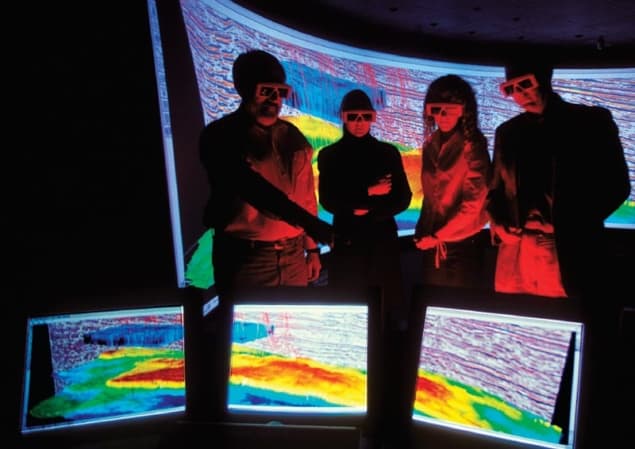Simulation and Its Discontents
Sherry Turkle
2009 MIT Press
£16.95/$22.00 hb 208pp

For generations “theory” and “experiment” were the twin drivers of scientific research. In the past few years, however, a new tool has come into its own: simulation. Computer simulations have revolutionized many areas of science and engineering, and their increased use as an alternative to traditional, hands-on interactions with physical systems has been possible thanks to significant improvements in computer processing speeds and access to computing resources.
Yet according to the sociologist Sherry Turkle, all is not well in the world of simulation. In Simulation and Its Discontents – the last in her series of four books on the relationships between “things” and “thinking” – Turkle addresses some of the limitations of simulations and gives voice to those who have concerns about their use. She cautions that while simulations have been embraced by a number of scientific and technical communities, the use of simulations can also be associated with an increasing distance from physical reality.
This is an important topic that is worthy of serious discussion. But unfortunately, the manner in which Turkle addresses it does not inspire much in the way of thoughtful reflection. The first half of her book is an extended essay about studies she conducted at the Massachusetts Institute of Technology, first in the mid-1980s and then in the mid-2000s. These studies aimed to assess attitudes towards simulation and visualization; as such, it would have been valuable for her to quantify prevailing opinions during both time periods and to assess any significant changes over the intervening years. Instead, Turkle relies heavily on qualitative comments from anonymous study participants, and focuses almost exclusively on commenters’ reservations about simulation use, with little discussion of the positive aspects associated with the widespread integration of computers into research and practice.
For example, in one passage Turkle describes a user’s experience with an early computer-aided-design programme as “choosing among options on a computer menu” and quotes him as wishing that “his work felt more ‘his’ “. This is an interesting perspective, but the book provides no sense of how widely these types of feelings are held. Readers cannot know whether they are hearing a serious issue frequently identified by many designers, a common but minor complaint readily accepted alongside the advantages simulations can offer, or simply the grievances of an uninspired designer happy to blame his problems on something other than himself.
For those of us who use simulations as part of our everyday work, Turkle’s depressing tone and lack of context is frustrating. It is also rather curious, because the second half of the book contains four largely positive “case studies” that describe the use of simulations in space exploration, architecture, oceanography and biology. These case studies (which are written by other authors, including William Clancey of NASA’s Ames Research Center) do provide some balance, but they also create a disconnect between the book’s two halves that Turkle does not address.
The studies’ scope is also rather limited. In this volume of the series, at least, Turkle’s primary focus is the use of simulations in data integration and visualization, but recent advances in understanding biochemical reactions, weather forecasting, high-energy physics and many other fields have relied on simulations in a much broader way, through using computers to solve complex mathematical equations. Although it is important to verify the equations solved and the solution methods used, such computational research has opened up valuable new avenues of study within many fields. Simulation has even provided experimental test beds in some fields, such as cosmology, where real experiments are not possible.
Despite her book’s shortcomings, Turkle does raise some important questions, including a concern about users’ reliance on “black box” software that they do not fully understand. In an ideal world, all scientists and engineers would understand the inner workings of every technology they employ in their work. In practice this is seldom feasible. Nevertheless, science progresses by building on previous work, rather than by scientists re-inventing the wheel; in many cases, simply understanding the principles behind the wheel is sufficient. Knowledge at the individual level may have been lost, but this knowledge remains available to the scientific community – and the trade-off is that new knowledge can be added by allowing scientists to focus on newer, more specialized areas of research. Turkle also raises a concern about the blurring of the division between computer science and natural science. However, many scientific advances arise at the interfaces between disciplines, and the benefits of such interdisciplinary work are now widely recognized.
Questions are always asked when a new technology is introduced, and users quickly identify both advantages and disadvantages. Lecture-presentation software, for example, eliminates the need for printing transparencies, but it introduces the possibility of technology mismatches (and also allows speakers to modify their presentations up to the last minute – a mixed blessing). Hence, there will always be some individuals who prefer the older technologies. There is nothing wrong with making that choice, but while it is important to understand the potential problems that are avoided, it is also valuable to know what potential advantages are, in the same stroke, given up. Thus, although recognizing any technology’s limitations is always imperative, by sounding only cautionary notes without ever offering an alternative or acknowledging the many benefits, Turkle risks becoming a dinosaur rather than a visionary.



